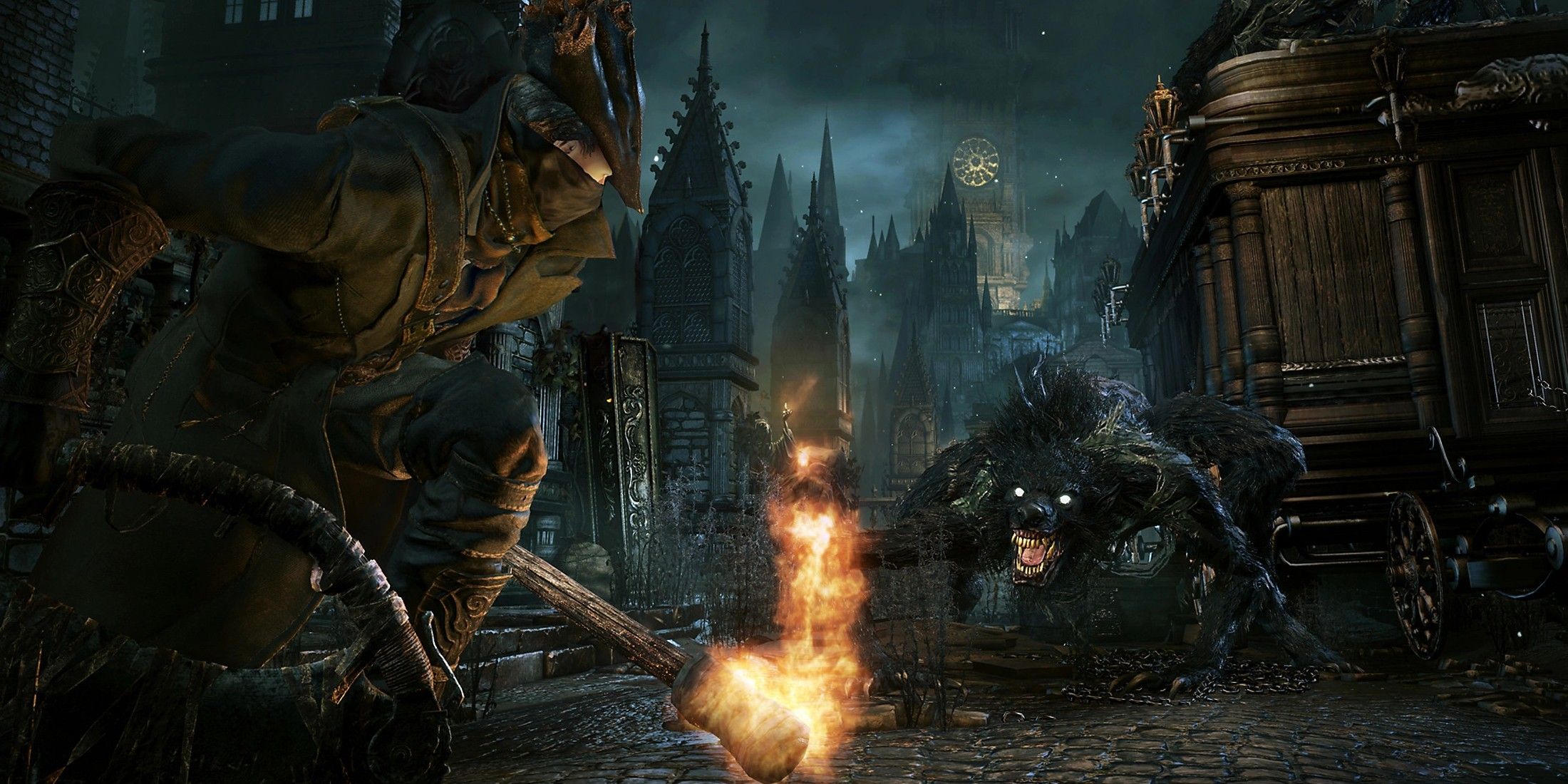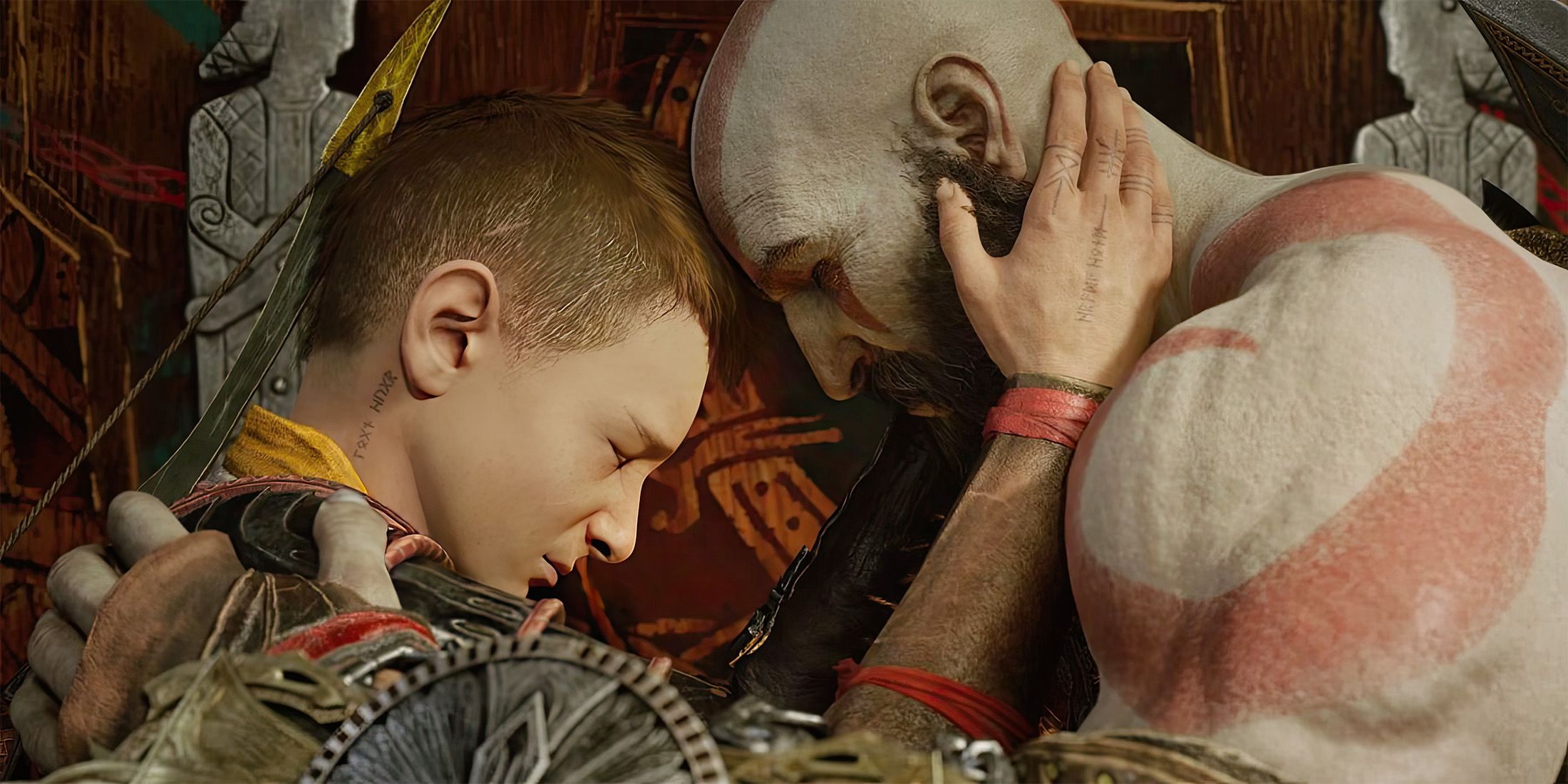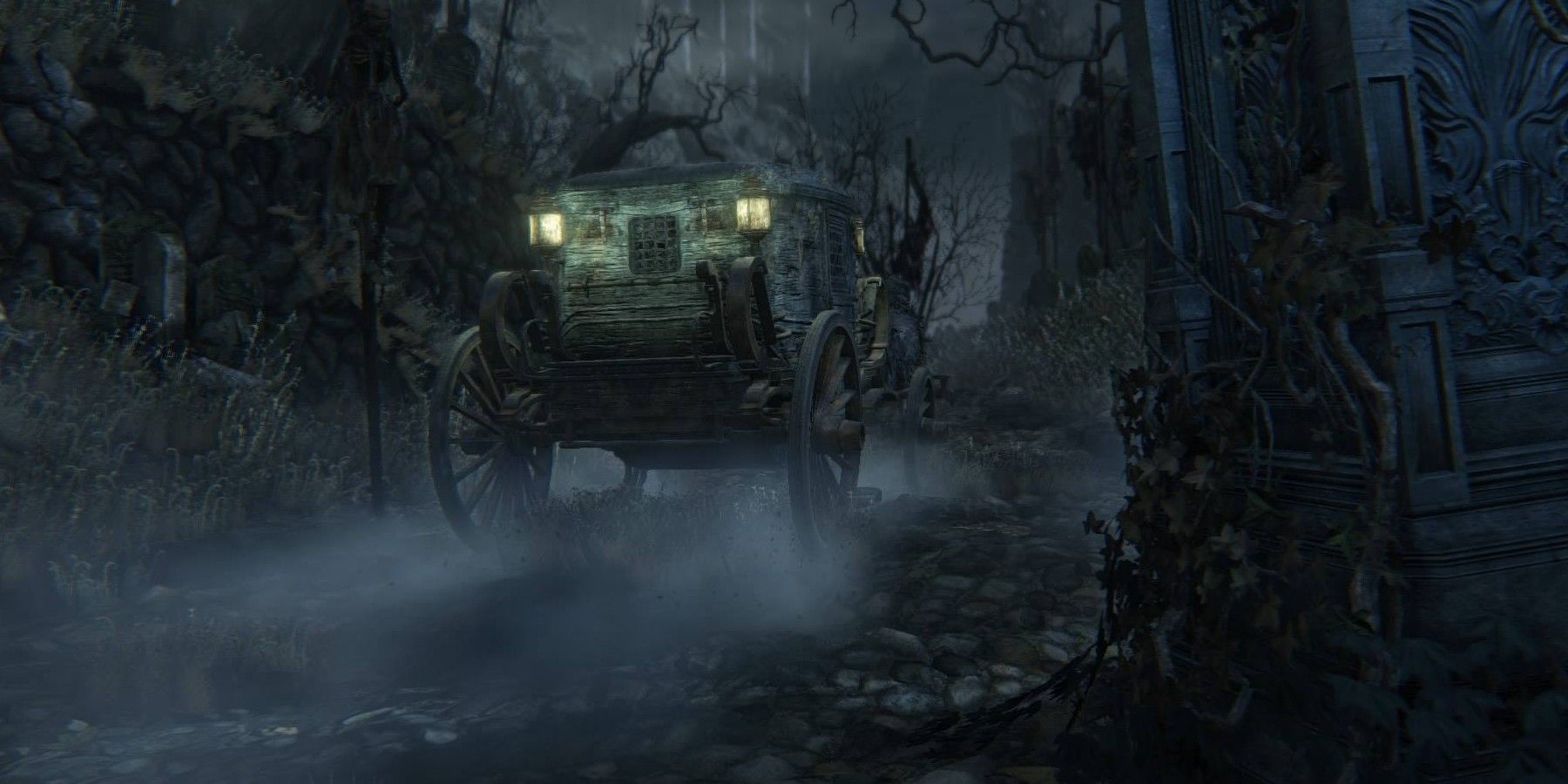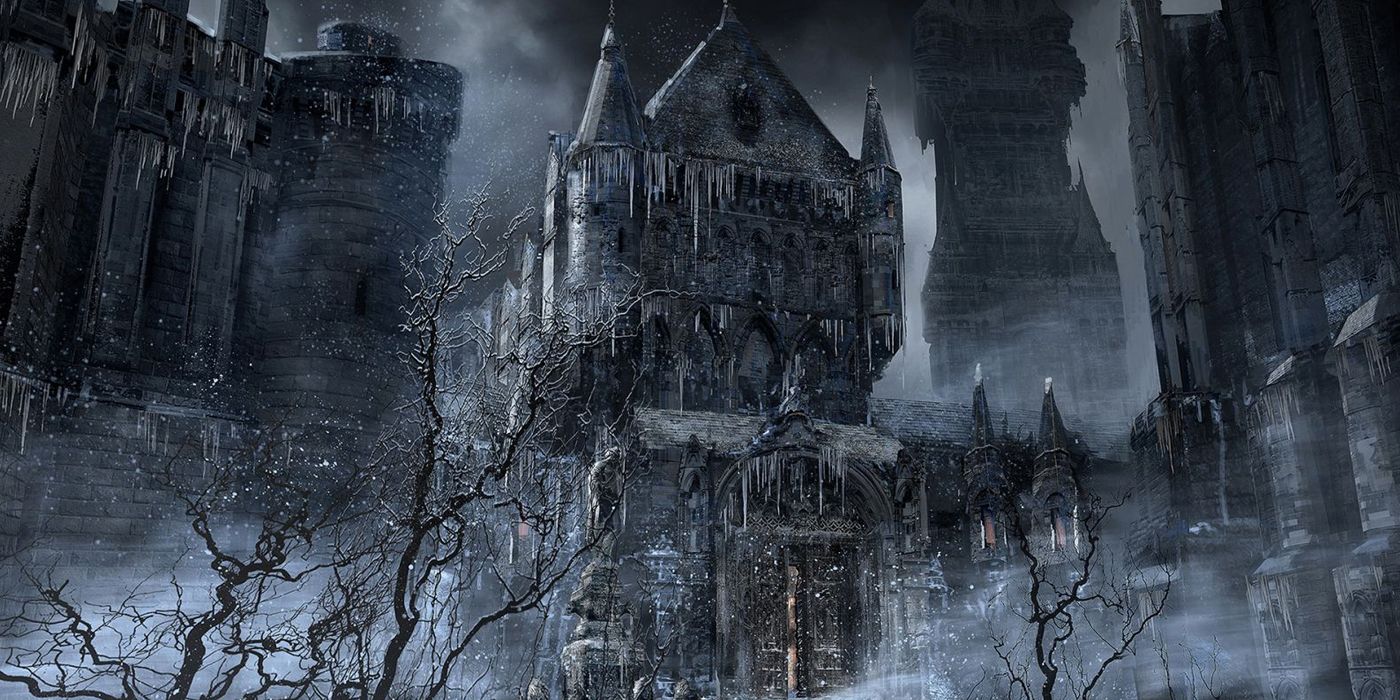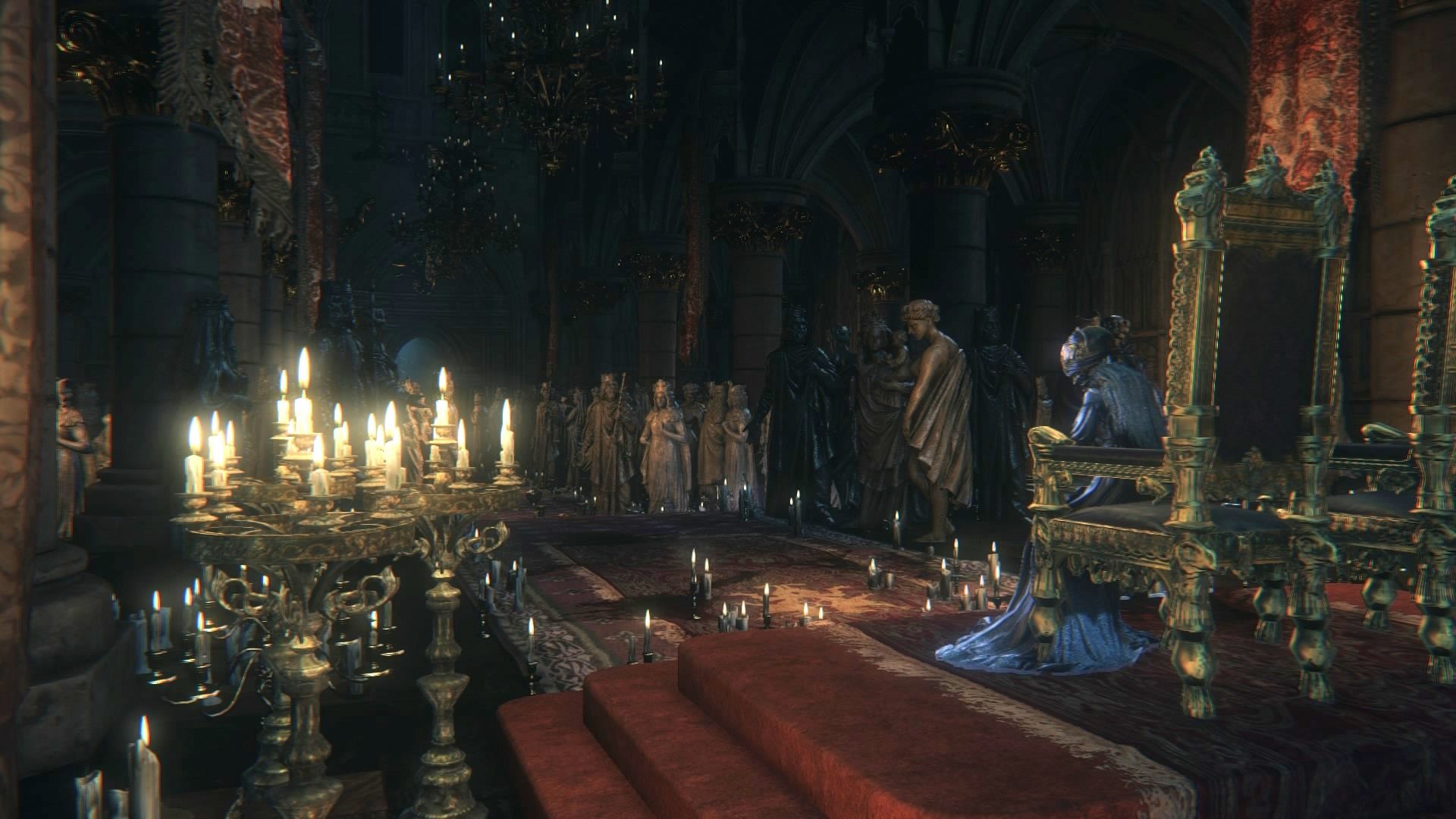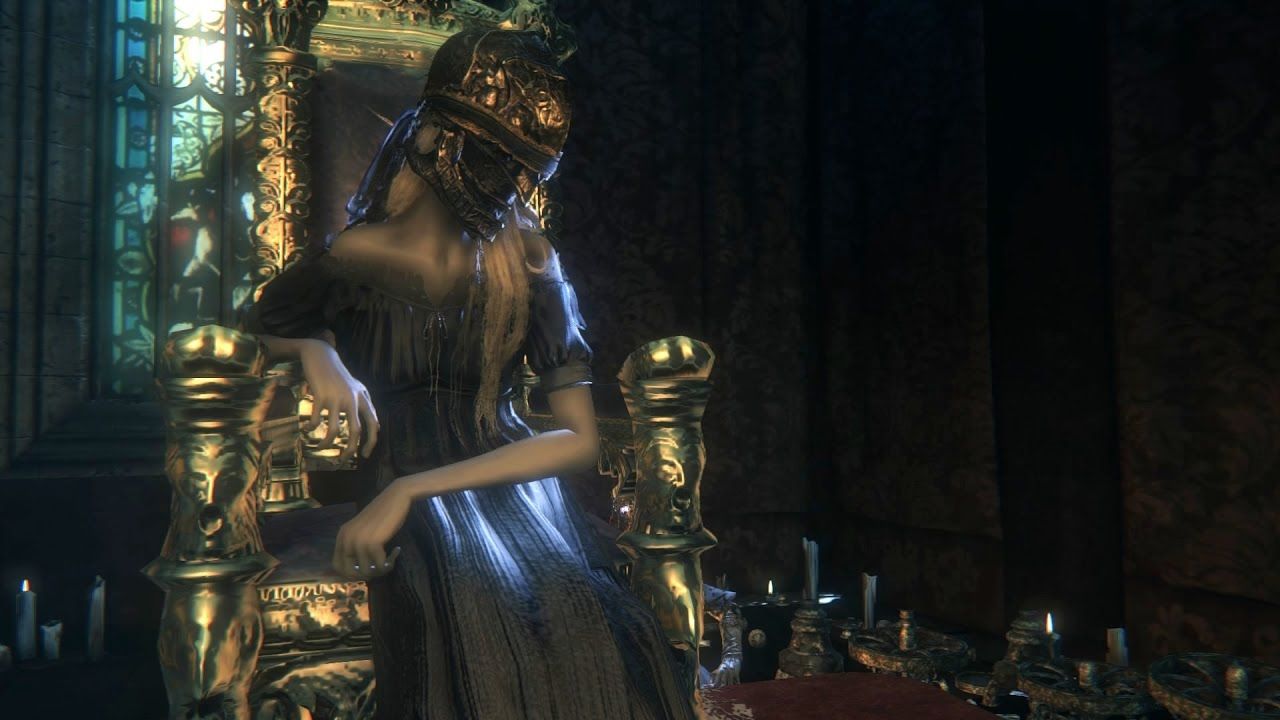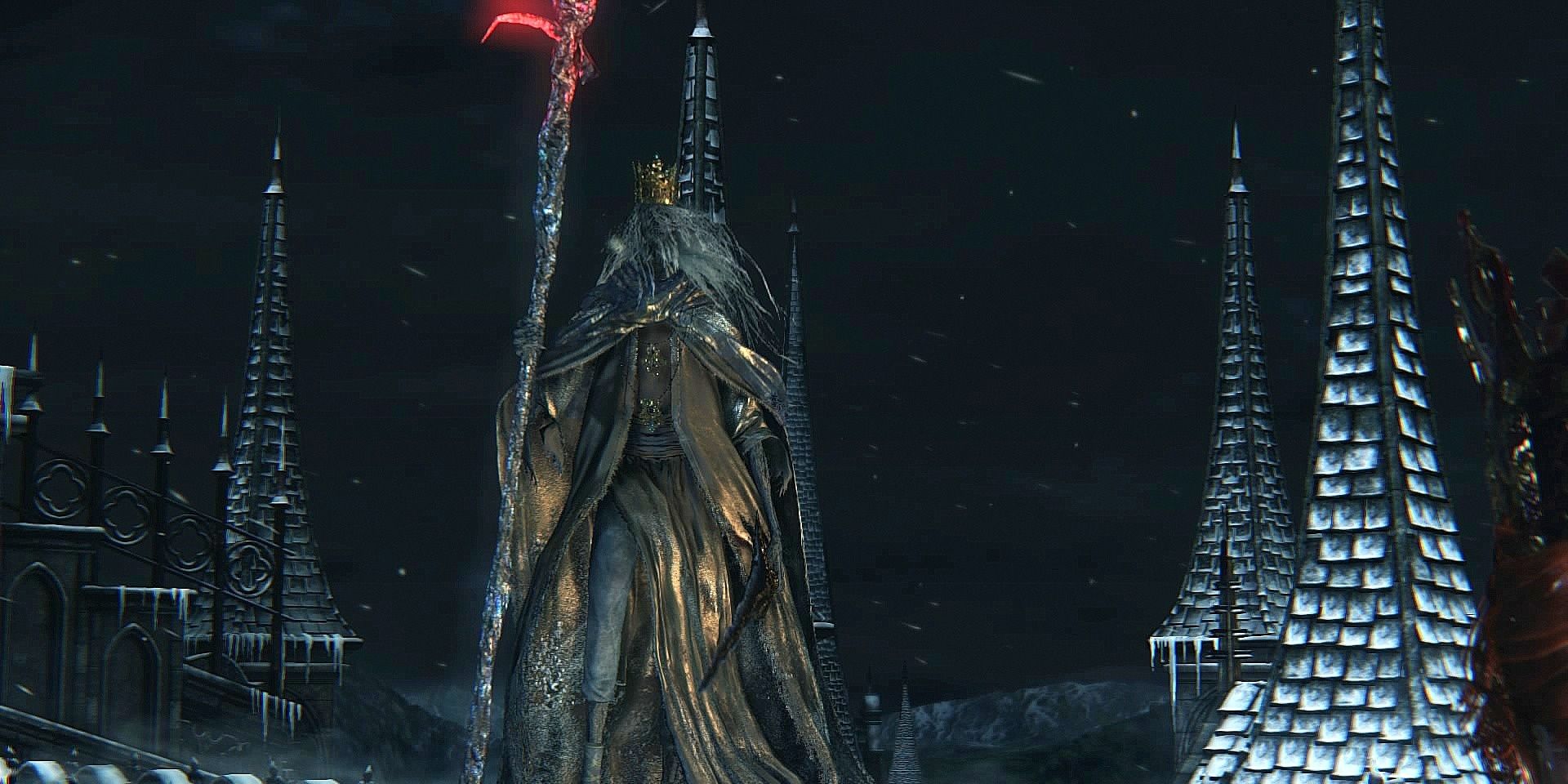Bloodborne is a game with a variety of lore-filled locations. Cainhurst Castle, an optional and hidden area of the game, stands beyond the destroyed bridge that crosses the Hemwick stretch of water. Many who have played through the area draw comparisons to the story of Dracula.
At one point in time there was a court of nobles in that location of Bloodborne who had commercial ties with the city of Yharnam. That tie lasted until relations with the Healing Church were irreparably strained, and the alliance came to an end.
Cainhurst's Pthumerian Ancestors
Following the Communion of the Ancient Blood, the Pthumeru civilization was annihilated by a plague of beasts. As a result, they were forced to seal their labyrinths and retreat within to protect the remaining Great Ones. However, not all members of this society survived to inhabit the chalice's ancient labyrinths. Some of them, most likely close relatives of Queen Yharnam, left Pthumeru before the decline began. It's unknown why they chose this, but it's likely to keep an eye on the labyrinth's sealed doors.
What is known is that they established a new society and built the magnificent Cainhurst Castle on the surface. The birth of the new clan precedes the birth of the city of Yharnam: the architecture of the Castle is much older, while retaining some familiar Gothic elements.
The physical characteristics of the Cainhurst court, which are tall and pale like the inhabitants of the labyrinths, are proof of their Pthumerian origins. Similarly, the interiors of the Castle are reminiscent of Pthumeru in some ways. The lanterns of the throne room can be found in some areas of the Chalices, and these ornaments release incense in order to ward off beasts.
Ancient Blood at Cainhurst and the Birth of the Vileblood
The Castle's nobles were the last representatives of Pthumeru's fallen society, and they placed a high value on style and elegance. Knights who prioritize beauty over strength is a cultural approach that is diametrically opposed to that of Yharnam.
Blood is a form of worship in Yharnam, but an object of desire in Cainhurst. The Communion of Blood is an ancestral practice for the nobles, deeply rooted in their ancestors, in contrast to Yharnam's worship ministers' religious approach. Queen Annalise, a direct descendant of the Pthumerian Queen, was at the helm of the Cainhurst nobility. She decided to fulfill her people's ambitions to return to the ancient glories after discovering Master Willem's studies on the Ancient Blood found only in the labyrinths.
The last drop of Oedon's blood was delivered to the sovereign by a traitor of the academy, who had stolen it from Willem's research laboratories. As a result, the queen was able to practice the Communion of Blood in the same way that her ancestor did. She became immortal following the infusion, and then the entire Cainhurst court began to draw from the queen's blood. The Bloodlust of Annalise and her subjects did not sit well with the Healing Church, as the vicars and ministers could not accept that Communion was being practiced elsewhere.
The Knights of Cainhurst adopted the moniker Vileblood, a derogatory term for the Healing Church that is synonymous with corruption and blasphemy. Furthermore, the knights of Annalise were tasked with carrying out retaliation against the Church's hunters in order to steal the blood supply of the institution of Yharnam.
Vileblood's Oath
The Vileblood moniker became so common in Cainhurst that it lost the air of ominousness. Taking an oath for the Vileblood meant becoming a chosen knight of Queen Annalise, the most prestigious position in society. The Vileblood knights were her elite guard, ready to sacrifice themselves to protect the Castle's and Annalise's honor.
Servants occupied the bottom rung of the social pyramid. They were not permitted to drink the blood of the queen, but were used for hunting beasts. The plague of beasts manifested itself in Cainhurst, as it had in Pthumeru and Yharnam, as a side effect of Communion. While hunting, servants were also given a knighthood, though this was only a grotesque attempt to maintain appearances.
The Executioners of the Healing Church and Martyr Logarius
The Healing Church's reaction was harsh. The practice of Communion of Blood at Cainhurst was considered blasphemy, so the first elite oath - the Executioners - was born from a rib of the Hunters. It was a warrior order tasked with annihilating Annalise and her kingdom. The Executioners stormed the Castle and slaughtered the entire court, however the Old Blood's power had granted the sovereign immortality. As a result, Logarius and his army was powerless to stop her. He decided to demolish the bridge that connected Cainhurst and Hemwick in order to isolate the Castle.
The commander of the Executioners locked Annalise up, sealing the throne room with an arcane artifice: the Crown of Illusions. He guarded the Castle for all eternity, hoping to prevent anyone from freeing the queen and carrying on the Vileblood lineage. He gave his life for this mission, becoming known as the Martyr Logarius to all.
The massacre of the Cainhurst court was heinous, as the Castle's inhabitants were slaughtered using specific techniques learned by hunters while exploring the labyrinths. Women were bound around their wrists with fetters, most likely to prevent them from using the Pthumerians' pyromancy and arcane abilities, then either slaughtered or beheaded. The servants of the Castle were the only ones spared because they never drank Annalise's blood. The Executioners' last battle was the invasion of Cainhurst, where Alfred was the lone survivor, then devoting his entire life to exacting his mentor's vengeance.
Bloodborne is now available on PS4.

